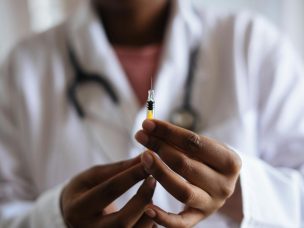Incident conditions that may be attributable to COVID-19 are common among adult COVID-19 survivors, according to research published in the May 24 early-release issue of the U.S. Centers for Disease Control and Prevention Morbidity and Mortality Weekly Report.
Lara Bull-Otterson, Ph.D., from the CDC COVID-19 Emergency Response Team, and colleagues used electronic health record data during March 2020 to November 2021 to examine the incidence of 26 conditions often attributable to post-COVID among patients with a previous COVID-19 diagnosis (case patients) compared with matched patients without evidence of COVID-19 (controls). Analyses were stratified by age groups (18 to 64 and ≥65 years). Follow-up was for 30 to 365 days after the index encounter.
The researchers found that 38 percent of case patients and 16 percent of controls experienced an incident condition. Multiple systems were affected by conditions, which included cardiovascular, pulmonary, hematologic, renal, endocrine, gastrointestinal, musculoskeletal, neurologic, and psychiatric signs and symptoms.
The highest risk ratios were seen for acute pulmonary embolism (risk ratios, 2.1 and 2.2 for those aged 18 to 64 and ≥65 years, respectively) and respiratory signs and symptoms (risk ratio, 2.1 for both age groups). For those aged 18 to 64 years, 35.4 and 14.6 percent of case patients and controls experienced an incident condition, respectively; among those aged ≥65 years, the corresponding proportions were 45.4 and 18.5 percent.
In other words, one in five and one in four COVID-19 survivors aged 18 to 64 and ≥65 years, respectively, experienced an incident condition.
“These findings can increase awareness for post-COVID conditions and improve post-acute care and management of patients after illness,” the authors write.










